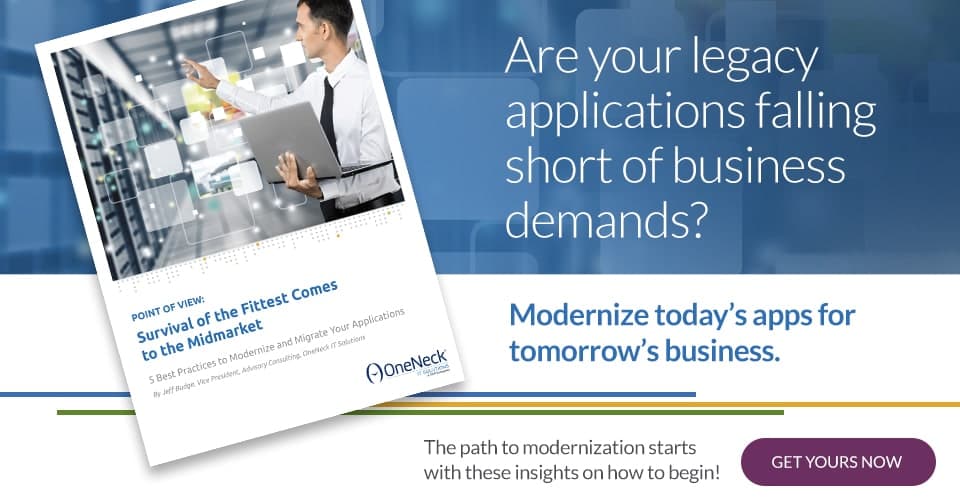Digital Strategy for Government Leaders | IT Services

State and local governments are continually called on to do more with less. Not only must they strive to satisfy a constituency that expects self-service, on-demand services, and to always be connected, they must do so in the face of a reduced staff and constrained budgets.
A 2015 Gartner report states that “a digital strategy for government, whether at a national or agency level, is critical in driving productivity, engagement and innovation. As technology continues to offer new and often revolutionary options in service delivery, citizens are increasingly comparing their experience in the commercial arena with that of government. The nature of this new competitive tension is often keenly felt by the government CIO when challenged to explain those differences.”
Developing a digital strategy is challenging for government agencies. As government IT infrastructure ages and public pressure to innovate increases, the need to embrace a digital strategy has become even more critical, especially as governments are challenged to:
- Balance both incremental and transformative change. With many legacy systems still in place, government infrastructure was not built for the cloud and changes will need to be made incrementally. In addition, a digital architecture with a shared-resources model allows for agencies to lower costs, but also makes procurement, security and management more complex.
- Put constituents’ needs front and center. Meeting constituents needs by implementing innovative products and services, monitoring usage and customer experience, and retailoring the approach will ensure agencies efficiently and cost-effectively meet expectations — today, weeks, months and years down the road.
- Nurture cross-departmental innovation. Innovation in government often happens in silos, where a lack of input and buy-in often leave agencies vulnerable to budget cuts. Adopting a cloud strategy throughout the government ensures that all departments can participate and add their expertise to any new processes or services.
- Improve security. Rising digital threats such as malware and ransomware are becoming increasingly complex, just as government IT budgets continue to be underfunded. In fact, while the private sector spends 10% of its IT budget on security, the average state or local government spends less than 5%. Securing sensitive data needs to be a higher priority across all government agencies.
As governments look to digitally transform operations in order to better serve constituents and reduce costs, many are turning to:
- The cloud: Cloud platforms offer governments with greater flexibility and efficiency, without the need for huge capital outlays. In addition, recent strides in security make the cloud a more viable option for government.
- Services-as-a-platform: Many state and local governments are restructuring systems so that all agencies can participate and use shared capabilities and common IT processes, such as call centers, to improve overall efficiencies and increase performance.
- Social collaboration: Forward-leaning government agencies are turning to social media as a cost-effective way to listen, respond and interact with constituents, fostering trust and stronger relationships.
- Internet of Things (IoT): IoT devices and applications can improve efficiencies and service delivery through better data collection. For example, many cities and towns are outfitting key infrastructure with smart sensors to collect, use and act on real-time data for traffic control, water leaks and much more.
To meet the challenges in driving forth a digital strategy, it’s important for government CIOs to understand employee and constituent expectations in the current digital age and promote its importance to government executives, elected officials and key stakeholders.
OneNeck IT Solutions understands the challenges state and local governments face in transforming IT to meet today’s connected, on-demand and self-service culture. OneNeck follows best practices to improve the delivery, security and processes of your public sector operations while meeting budget constraints.




